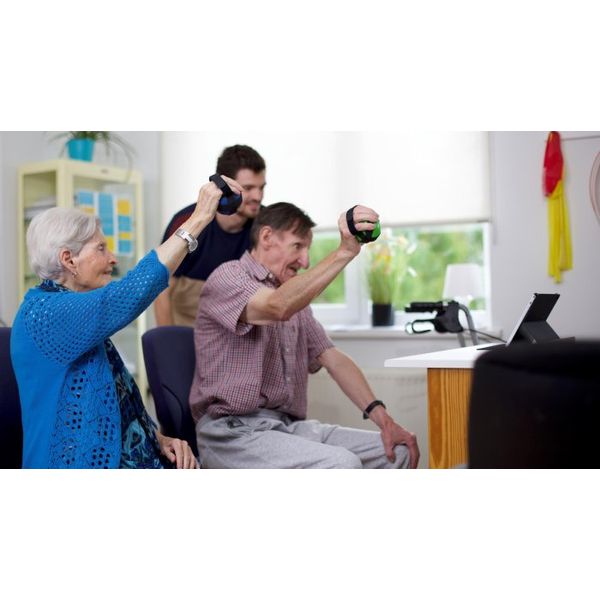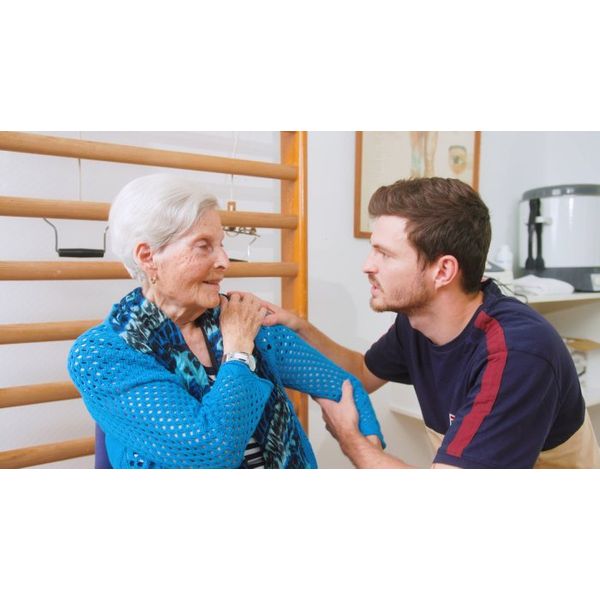

- Home
- Companies
- Creative Therapy
- Articles
- Rehabilitation of Maria after fall in ...
Rehabilitation of Maria after fall in WZC - Case Study
- Resident in an assisted living facility
- Pain problems after slight fall
- Difficulty moving shoulder, wrist and hip
Two weeks ago, Maria had an unfortunate fall in the hallway of the assisted living facility where she resides. Since this incident, she has suffered from persistent pain at the level of both her shoulders, right hip and wrist. Although the mobility of the joints was fortunately unaffected, Maria suffered a marked fear of movement as a result of the fall. Trying to move as little as possible herself, she became extremely needy in a very short period of time. For this reason, she now often stays alone in her room, beginning to feel lonely and isolated. Due to this isolation, she quickly becomes dejected and is difficult to motivate for her daily therapy.
Hand squeeze strength is one of the most important biomarkers for determining a patient`s health status.
- General upper limb activation
- Improve stability in the right wrist
- Regain self-confidence in own movement
- Regaining independence


In this exercise, the therapist is able to determine the desired direction of movement and amplitude in advance. This allows Maria to practice specifically within the basic movements of her wrist and also strengthen her hand squeeze strength. For example, by asking Maria to pro and supinate the hand during the calibration of the exercise, the movement limits are determined based on her specific abilities or the limits set by the physical therapist herself. This exercise is easy to understand and allows one to fully focus on the correct execution of the movement. To improve hand squeeze strength, there is even an option to increase or decrease the height of the helicopter by repeatedly squeezing Squeezi at varying speeds.
This exercise allows Maria to pleasantly rediscover her full range of motion. Using large arm movements, she can conjure up different pictures, about which she often even shares a little anecdote with the therapist. The diversity of images keeps her involved during therapy and she is always curious to see which picture she will make appear this time.
Through this application, Maria can be reintroduced in a playful way within the group event of the residential care center. The Bingo game allows her to control a virtual windmill that, after a fixed number of rotations, produces a number with which the other residents try to fill their bingo cards. Other residents can participate simply by briefly taking over the Squeezi from Maria so that she, too, can look for the correct numbers.
Since Squeezi can be easily attached to the lower legs and ankle via the Velcro strap, this game can even be played by making cycling movements on a seat bike, for example. The possibilities are endless and can make for a playful group activity where everyone can participate.
